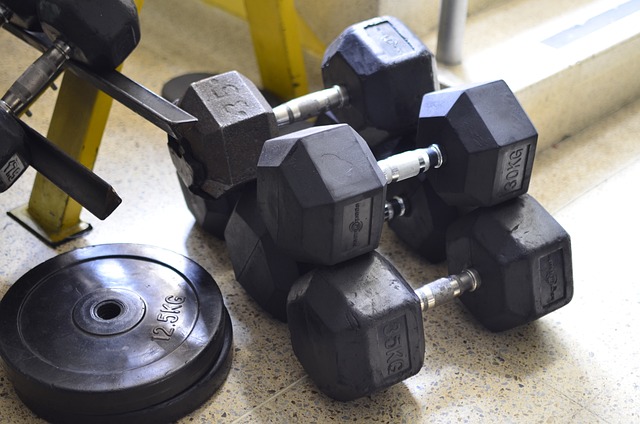When it comes to cardiovascular exercise, two popular methods dominate the fitness world: interval training and steady-state cardio. Both have their merits, but which one is better for you? The answer depends on your goals, fitness level, and personal preferences. In this article, we’ll explore the differences between these two approaches, weigh their pros and cons, and help you decide which method aligns best with your needs.
What is Interval Training?
Interval training, often referred to as High-Intensity Interval Training (HIIT), involves alternating short bursts of intense effort with periods of low-intensity recovery or complete rest. For example, you might sprint at maximum effort for 30 seconds, followed by a minute of walking or slow jogging. This pattern is repeated for a set duration, typically ranging from 15 to 30 minutes.
Benefits of Interval Training
- Time Efficiency : One of the biggest advantages of HIIT is its time-saving nature. A typical session can last as little as 20 minutes while delivering results comparable to longer steady-state workouts.
- Increased Calorie Burn : HIIT not only burns calories during the workout but also boosts your metabolism for hours afterward—a phenomenon known as the “afterburn effect” or excess post-exercise oxygen consumption (EPOC).
- Improved Endurance and Strength : By challenging your body with high-intensity efforts, interval training enhances both aerobic and anaerobic fitness. It also helps build muscle endurance, making it an excellent choice for athletes.
- Variety and Engagement : The dynamic nature of HIIT keeps workouts interesting and prevents boredom, which is especially beneficial for those who struggle with monotonous routines.
Drawbacks of Interval Training
- Risk of Injury : Pushing yourself to maximum intensity increases the likelihood of strains, sprains, or other injuries if proper form isn’t maintained.
- Not Suitable for Beginners : Without a solid fitness foundation, jumping into high-intensity workouts can lead to burnout or overtraining.
- Requires Recovery Time : Due to its demanding nature, HIIT should be done no more than 2–3 times per week to allow adequate recovery.
What is Steady-State Cardio?
Steady-state cardio involves maintaining a consistent pace and moderate intensity throughout the entire workout. Examples include jogging, cycling, swimming, or using an elliptical machine at a comfortable rhythm for 30–60 minutes.
Benefits of Steady-State Cardio
- Sustainability : Unlike the grueling nature of HIIT, steady-state cardio is easier to sustain over longer periods, making it ideal for building endurance gradually.
- Low Risk of Injury : Since the intensity remains moderate, there’s less stress on joints and muscles, reducing the risk of injury.
- Mental Relaxation : Many people find steady-state cardio meditative and calming. It allows you to zone out, listen to music, or even watch TV while exercising.
- Accessible for All Levels : Whether you’re a beginner or a seasoned athlete, steady-state cardio can be tailored to match your current fitness level.
Drawbacks of Steady-State Cardio
- Time-Consuming : To see significant results, you may need to dedicate 45–60 minutes or more to each session, which can be challenging for busy individuals.
- Limited Calorie Burn Post-Workout : Unlike HIIT, steady-state cardio doesn’t produce much of an afterburn effect, meaning calorie expenditure stops shortly after the workout ends.
- Potential for Plateaus : If performed repeatedly without variation, steady-state cardio can lead to stagnation in progress due to the body adapting to the same routine.
Which is Better for Weight Loss?
Weight loss ultimately boils down to creating a calorie deficit—burning more calories than you consume. Both interval training and steady-state cardio can contribute to this goal, but they do so differently.
- HIIT : With its ability to torch calories quickly and keep your metabolism elevated post-workout, HIIT is highly effective for weight loss in a shorter timeframe. However, because it’s physically demanding, you may not be able to perform it daily.
- Steady-State Cardio : While it burns fewer calories per minute compared to HIIT, steady-state cardio can still be effective when done consistently over longer durations. Additionally, it’s easier to incorporate into a daily routine without risking burnout.
For optimal weight loss, combining both methods might yield the best results. For instance, you could alternate between HIIT sessions and steady-state cardio days to balance intensity and recovery.
Which is Better for Heart Health?
Both forms of cardio are beneficial for heart health, but they target different aspects:
- HIIT : Studies show that HIIT improves cardiovascular function by increasing stroke volume (the amount of blood pumped with each heartbeat) and enhancing overall circulation efficiency.
- Steady-State Cardio : Long-duration, moderate-intensity workouts strengthen the heart muscle and improve aerobic capacity, which is crucial for endurance activities like running or cycling.
Ultimately, the key is consistency. Incorporating either—or ideally both—types of cardio into your routine will promote long-term heart health.
Which is Better for Building Endurance?
If your primary goal is to improve endurance, steady-state cardio takes the lead. Activities like long-distance running or cycling train your body to sustain effort over extended periods, improving oxygen utilization and muscular stamina.
However, HIIT can complement endurance training by boosting lactate threshold—the point at which your muscles begin to fatigue. By incorporating intervals, you teach your body to recover faster between bouts of high effort, enhancing overall performance.
How to Choose What’s Right for You
Here are some factors to consider when deciding between interval training and steady-state cardio:
- Your Fitness Goals :
- For fat loss and time efficiency: HIIT.
- For endurance and mental relaxation: Steady-state cardio.
- Your Current Fitness Level :
- Beginners may benefit more from starting with steady-state cardio before progressing to HIIT.
- Advanced exercisers can handle the demands of HIIT while reaping its benefits.
- Your Schedule :
- If you’re pressed for time, HIIT offers maximum results in minimal time.
- If you prefer longer, less intense workouts, steady-state cardio fits well.
- Your Preference :
- Enjoyment matters! Choose the type of cardio that motivates you to stick with it long term.

Leave a Reply